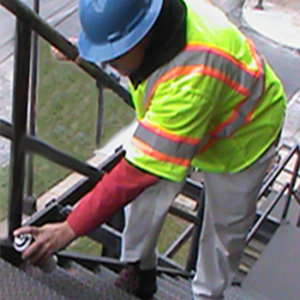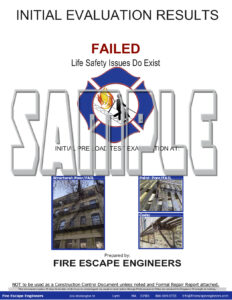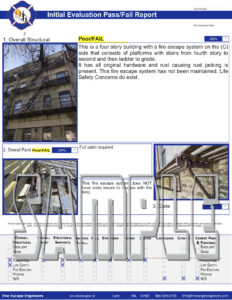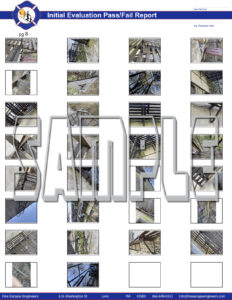


Step 2.
Perform Initial OR Technical Evaluation
Visual walk through of all accessible Fire Escape system.
Step 3.
Certify OR review findings
Certify & Load Test
Review Technical Repair Report and Bid Package



We can answer your questions:
What does an inspector do?
The inspector examines the entire fire escape system to verify that it is structurally sound, has been kept painted, and is ready for its intended use. He will verify connections and components to identify what surface rust must be scraped and painted, internal rust removed, or structural repairs completed.
Photographs and a written report will summarize the status of the system. Also, an inspection video is usually made available for client review.
How much does it cost to Certify?
The cost for certification of a fire escape system varies depending on size, complexity, and city requirements. The average residential certification ranges from $500 to $1,500 and the average commercial system ranges from $1,000 to $5,000.
What are the next available dates for an inspection?
Most inspections can be scheduled within one to two weeks and occasionally three weeks, depending on the size and complexity of the fire escape systems.
How long does it take to submit certification to the AHJ*?
Certification is submitted to the AHJ within five to ten business days after a passed inspection.
What is a load test and how much does it cost?
Load testing is required by law or “other evidence of strength” (a full restoration of all fasteners and connections to the building or a reverse engineered calculated load test) may be acceptable to the AHJ in lieu of a Load Test. A liability disclaimer may also be required.
A load test is an on-site test using sand bags weighing 1,000 to 3,000 for an hour on the entire fire escape system. The average residential load test ranges from $2,000 to $4,000. The average commercial system ranges from $5,000 to $8,000.Is there more than one kind of rust?
Yes. The most commonly found, surface rust, must be scraped, primed and painted. The most dangerous, internal rust, requires the connection to be separated, scraped, material re-enforcement or replacement, primed, and silicone chalk applied before reconnection with new fasteners.
How is my wall connection verified?
It must be load tested, reinforced, or replaced with threaded through bolt or epoxy bolt.
Do I have lead paint?
All fire escapes built before 1978 have lead paint on them requiring an EPA renovator’s license to scrape and paint or repair them.
Can fire escapes be welded?
No. All existing welds must be x-rayed, load tested, or reinforced and all new repairs must be bolted. Also, EPA fines for welding on lead painted structures start at $37,500 per incident.
Does a fire escape inspector need a license?
Yes. They must be a registered design professional or licensed fire escape inspector to sign a certification.
Does the repair vendor need a license to work on a fire escape?
Yes. A general contractor’s license is required for permit and inspector certification.
What insurance is required to inspect or repair my fire escape?
Inspectors must carry engineering insurance, but can’t repair. Repair vendors must carry general contractor insurance, but can’t inspect.
*AHJ = Authority Having Jurisdiction
Certification of a fire escape must be submitted to the AHJ by a Registered Design Professional or a Licensed/Certified Fire Escape Inspector.
How to self inspect a fire escape…
5 Steps to Certification
Fire Escape Load Testing




You must be logged in to post a comment.